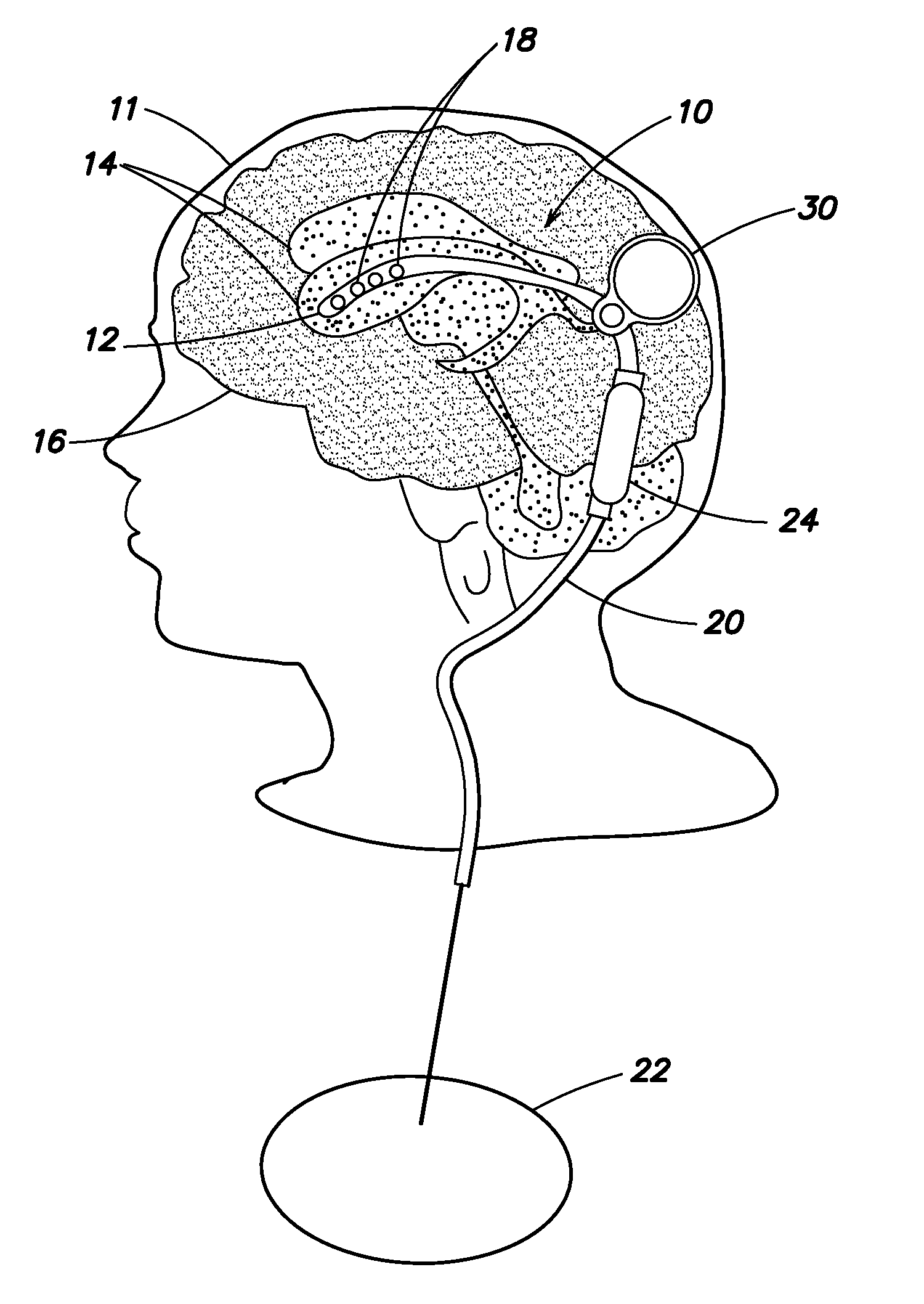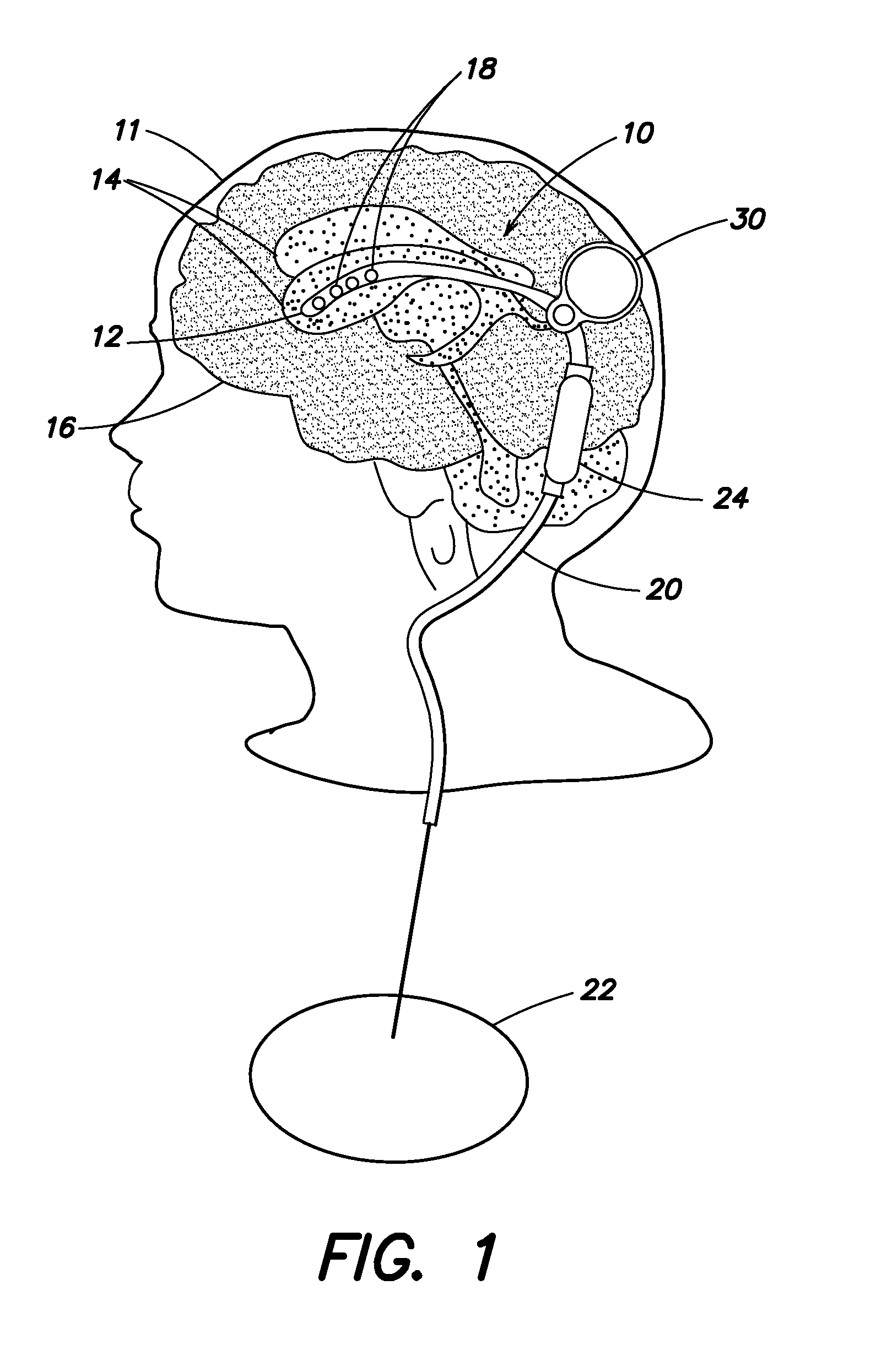Shunt flusher
- Summary
- Abstract
- Description
- Claims
- Application Information
AI Technical Summary
Benefits of technology
Problems solved by technology
Method used
Image
Examples
Embodiment Construction
[0027]Aspects are directed to devices and systems used to flush obstructions in the ventricular catheter. The devices or systems are positioned between the catheter tip and the shunt valve and include a reservoir holding CSF. It should be appreciated that as used herein, “proximal” refers to the upstream portion of the shunt system, such as the catheter side of the shunt system. The proximal side generally extends from the ventricle to the shunt valve. “Distal” refers to the downstream portion of the shunt system, such as the drainage side of the shunt system. The distal side generally extends from the shunt valve to the peritoneum or other CSF resorbtion site. A conduit allows CSF to drain to the shunt valve and to fill the reservoir. In one embodiment, the device also includes a check valve disposed within a valve housing selectively movable between a normal flow position and a backflow position. When in the normal flow position, the check valve and housing allow free flow of CSF ...
PUM
 Login to View More
Login to View More Abstract
Description
Claims
Application Information
 Login to View More
Login to View More - R&D
- Intellectual Property
- Life Sciences
- Materials
- Tech Scout
- Unparalleled Data Quality
- Higher Quality Content
- 60% Fewer Hallucinations
Browse by: Latest US Patents, China's latest patents, Technical Efficacy Thesaurus, Application Domain, Technology Topic, Popular Technical Reports.
© 2025 PatSnap. All rights reserved.Legal|Privacy policy|Modern Slavery Act Transparency Statement|Sitemap|About US| Contact US: help@patsnap.com



